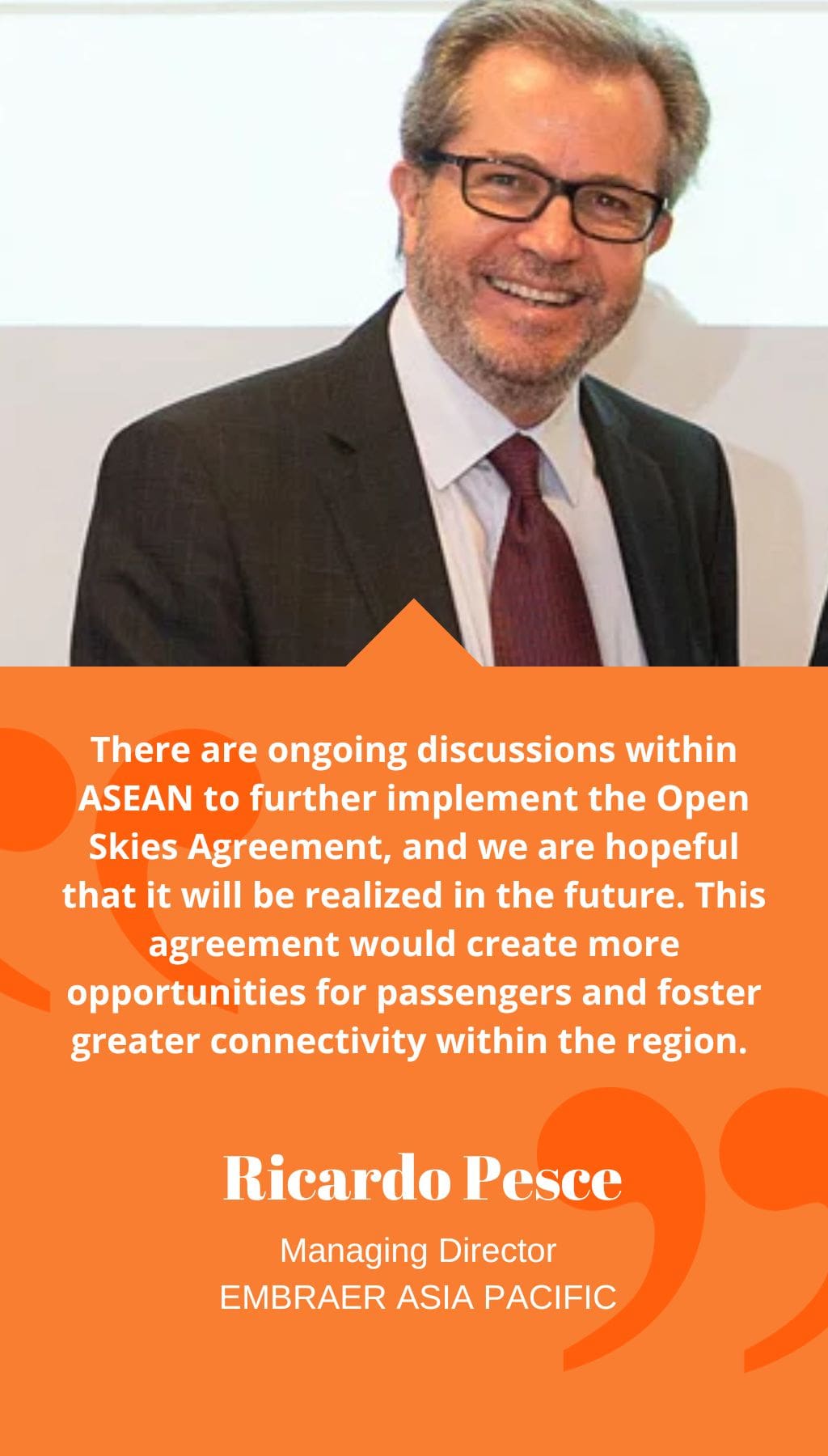
- Singapore | 15 April 2019

Embraer has had a presence in Singapore for over a decade. Could you describe the reasoning for establishing an office in the country and outline a few recent key milestones?
In the mid 1990s, our largest market was the USA, followed by Europe. However, we recognized the need to diversify and expand our presence in Asia, so we made the strategic decision to establish offices in China and Singapore. Singapore was chosen as a hub for the rest of the Asia Pacific region due to its excellent logistics, legal framework, safety standards, and intellectual property (IP) protection. Over the past 16 years, we have successfully placed over 330 airplanes in 17 countries in the Asia Pacific region. In 2006, we also made a bold move by setting up a regional distribution center for parts in Singapore, becoming the first large Brazilian corporation to establish a presence in the country. Since then, we have witnessed the growth of the aerospace industry in Singapore and have participated in key events such as the Farnborough Airshow in 2016, where we debuted the E190-E2 first prototype and the KC-390, along with the Legacy 500 business jet. We are optimistic about the growth prospects in Asia Pacific and believe that Singapore provides us with a strong base to capture opportunities in the region.
What are Embraer’s target markets after Singapore and China?
We see a clear indication that the center of gravity for the aerospace industry is shifting from the USA towards Asia. Singapore, with its favorable business environment, logistics infrastructure, legal framework, safety standards, and IP protection, is an ideal hub for us to do business and expand our reach in the Asia Pacific region. In addition to China and Singapore, we also see opportunities in emerging economies within the region. As the GDP of each country grows, the demand for travel is expected to increase. According to IATA, Asia Pacific is projected to account for about two-thirds of global growth over the next 20 years, with nearly half of all air travel touching the region by 2034. For example, Indonesia, with its vast number of islands, presents a prime example of a growth market for air transportation. We believe that there are significant opportunities for Embraer to capture market share in these emerging economies and expand our presence beyond Singapore and China.
What are your views on the current regulatory framework in the ASEAN region to allow for growth and development within the aerospace industry?
There are ongoing discussions within ASEAN to further implement the Open Skies Agreement, and we are hopeful that it will be realized in the future. This agreement would create more opportunities for passengers and foster greater connectivity within the region. Currently, most air traffic is directed through major hubs such as Bangkok, Ho Chi Minh, and Hanoi. However, with the implementation of the Open Skies Agreement, there will be opportunities for connectivity into secondary and tertiary markets, creating demand for smaller single-aisle jets like our E-Jets, which can better match capacity against demand. Although it may take time to overcome the challenges of protecting individual markets, we are confident that the economic benefits of open skies will prevail, and ASEAN’s skies will become more ‘open’ in due course.
Can you discuss the significance of the recent developments made by Embraer with its new E-Jets in terms of environmental impact?
Our main objective in developing the new E-Jets family is to reduce fuel consumption and make the aircraft more aerodynamic and efficient. As a result, we have created one of the most fuel-efficient airframes in the world, with a low weight in relation to the airplane’s payload. Our approach to design is centered on achieving efficiency and sustainability, even as we continue to face the current low oil price, we are confident that it will eventually rise, emphasizing the long-term need for fuel efficiency.
Additionally, we are proud to be involved in the ecoDemonstrator program, which is a joint venture between Embraer and Boeing. We are using our existing E-Jets platform to test new technologies aimed at improving the environmental performance of airplanes and accelerating their introduction into the marketplace.
Our focus on sustainability and fuel efficiency is not just good for the environment, but it also benefits our customers in the form of lower operating costs. With the E-Jets E2 program, we are confident that our latest developments will contribute significantly to reducing our carbon footprint and creating a more sustainable future for the aviation industry.














